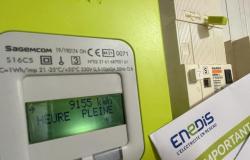Starting Monday, parents will be able to open a “climate future” savings plan for their children under 21. The goal? To finance the ecological transition.
Hahahahaha
I remind those who still know how to count that there is nothing profitable in the transition.
It’s not that I’m for or against it, it’s that factually all the green stuff is totally subsidized. From electric cars to solar panels, not to mention wind turbines or even a heat pump, nothing is sold without the State paying half of it.
Suffice to say that when you invest in the “transition” you invest in subsidies!
This may be a good idea in a rich, debt-free country.
But in a country with 3.16 trillion euros of debt, this seems less obvious.
So do what you want, contribute to the PEAC, give your money to the kind bankers who will collect your savings which will be invested in vehicles dedicated to the ecological transition.
“The PEAC is in fact intended to finance low-carbon projects (wind, photovoltaic, hydrogen, etc.). These could be shares or bonds of companies with the SRI label (socially responsible investment, the France finance verte label) or having committed to respecting the requirements of the Paris Agreement.”
“Like the retirement savings plan (PER), which offers the same managed management, the invested savings will be entrusted to a manager whose mission will be to secure the capital as the maturity date approaches. The texts provide that the share of assets with a low-risk investment profile must be equal to at least 70% of the outstanding PEAC two years before the liquidation date. The plan holder may, however, opt for free management.”
The Minister of Economy and Finance, Bruno Le Maire, has always indicated that the yield of this product would be “more attractive than that of the livret A”, currently 3%. Unlike this regulated booklet, the remuneration of the PEAC will not be set by the public authorities, but will depend on the vagaries of the financial markets and the performance of the referenced companies. The PEAC falls into the category of risky investments.”
There you go, if you want to know more, find out!
Because between you and me, when the State, which doesn’t know how to manage the country, tells me where I should put my money… I take the opposite path because I don’t like being taken for a ride or being taken for a fool.
The transition is not profitable and the risk is that, as always, we will be the counterpart of the big guns who will pass on their moldy lines to us…
Charles SANNAT
For those who want to go further, you can subscribe to the STRATEGIES Letter to have access to this special file “10 solutions to prepare for the consequences of dissolution” (all the information here). Any subscription gives access to all the files already published and to all the archives.
“Insolentiae” means “impertinence” in Latin.
To write to me [email protected]
To write to my wife [email protected]
You can also subscribe to my monthly newsletter “STRATEGIES” which will allow you to go further and in which I share with you the concrete solutions to implement to prepare you for the world after. These solutions are structured around the PEL approach – heritage, employment, location. The idea is to share with you the means and methods to put in place your personal and family resilience.
“By trying to stifle peaceful revolutions, we make violent revolutions inevitable” (JFK)
“This is a ‘presslib’ article, that is to say free of reproduction in whole or in part provided that this paragraph is reproduced after it. Insolentiae.com is the site on which Charles Sannat expresses himself daily and delivers an impertinent and uncompromising analysis of economic news. Thank you for visiting my site. You can subscribe for free to the daily newsletter on www.insolentiae.com.”






